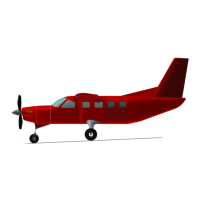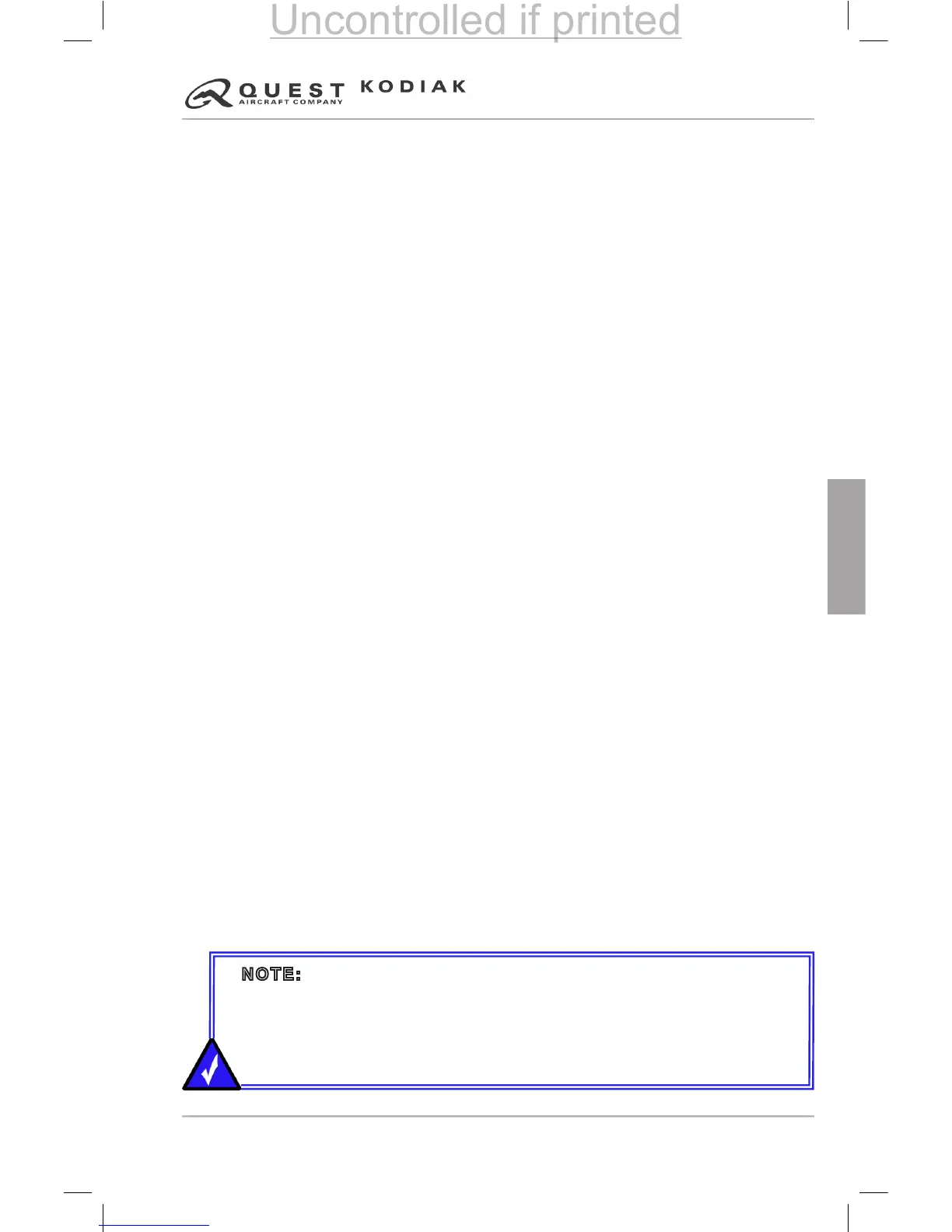9.4-1 GENERAL
The optional TKS Ice Protection System, which allows ight into known
icing, is dened by 14 CFR Part 25, Appendix C, Envelopes for Continuous
Maximum and Intermittent Maximum Icing. In icing conditions, the airplane
must be operated as described in the “Normal Procedures” section of
this supplement. Where specic operational speeds and performance
information have been established for such conditions, this information must
be used.
9.4-2 LIMITATIONS
OUTSIDE AIR TEMPERATURE LIMIT
Minimum outside air temperature limit for TKS uid ............................. -40°C
Do not activate the TKS system at temperatures less than -40°C.
ENVIRONMENTAL CONDITIONS
At the rst sign of Ice Protection System malfunction, the aircraft must
immediately exit icing conditions.
In-ight icing conditions are dened as:
• Visually detected ice or the presence of visible moisture in any form at
an outside air temperature of 41°F (5°C) or less.
• Visible rain at temperatures below 41°F (5°C) OAT.
• Droplets that splash or splatter on impact at temperatures below 41°F
(5°C) OAT.
• Accumulation of ice on the upper or lower surface of the wing, aft of the
protected area.
Known icing conditions are dened by 14 CFR Part 25, Appendix C
(for IAC AR certied airplanes, IAC AR Aviation Regulations Part 25,
Appendix C). These conditions do not include, nor were tests conducted
in, all icing conditions that may be encountered (e.g., freezing rain, freezing
drizzle, mixed conditions, or conditions dened as severe).
Pilots who encounter icing conditions which are outside the FAR dened
conditions must divert the ight promptly. Inadvertent operation in these
conditions may be detected by unusually extensive ice accumulating on the
airframe in areas not normally observed to collect ice.
If the airplane encounters conditions that are determined to contain freezing
rain or freezing drizzle, immediately exit the conditions by changing altitude,
turning back or, if clear air is known to be immediately ahead, continuing on
course.
NOTE: The National Weather Service’s Automated Surface Observing
Systems (ASOS) program does not provide reports of freezing drizzle.
It is the pilot’s responsibility to evaluate and understand weather along
the intended route and identify any potential weather hazards through
evaluation of current observations, Pilot Reports, Area Forecasts,
AIRMETS, SIGMETS, NOTAMS, etc.

